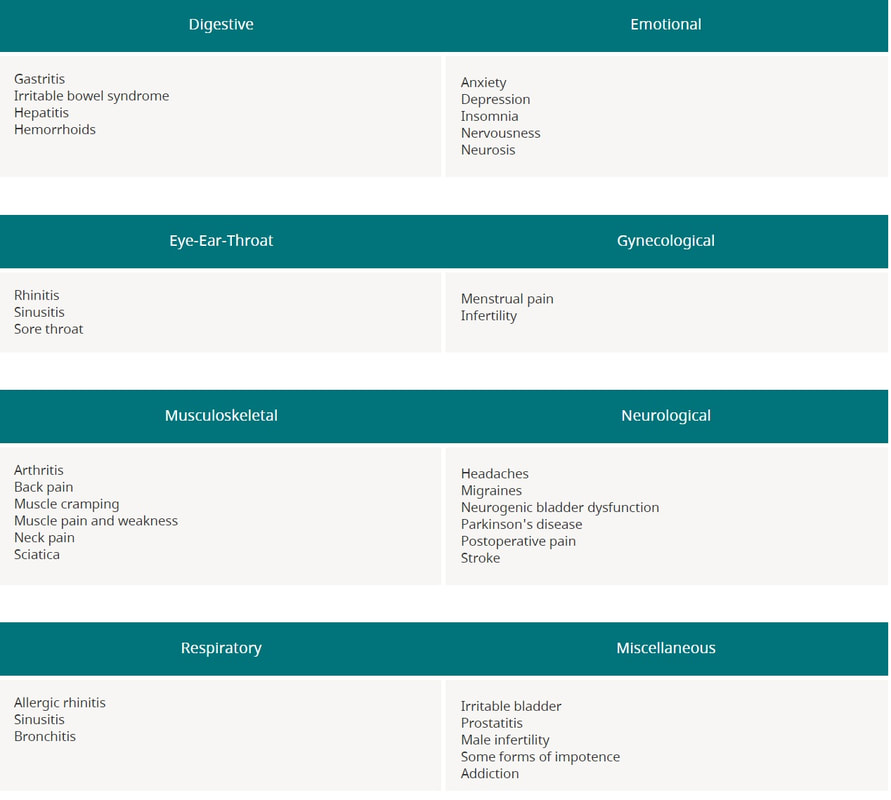FAQ
Does it hurt?
Acupuncture needles can be as thin as a human hair or almost as thick as a hypodermic needle and different acupuncturists use different needling techniques. As a general rule, the thinner the needle, the less sensation one feels.
How deep are acupuncture needles inserted into the body?
The needles are generally inserted very shallow. The depth is going to vary depending on the part of the body that is being treated. The average point is inserted to the depth of 1/4 to 1/2 inch. This is going to vary according to different styles of acupuncture. The more fleshy regions of the body, like the gluteus maximus may have an insertion depth of up to a couple of inches depending on the size of the patient.
How Does Acupuncture Work?
Acupuncture involves the insertion of fine wires (needles) into specific spots to stimulate the body to heal itself. Traditional explanations of acupuncture involve its effect on improving the flow of qi (‘vital air/energy’ and referred to as ki by the Japanese) and on balancing Yin and Yang, a paradigm of health and disease that maps very closely to the Western concept of homeostasis. By stimulating specific points on the body with heat, pressure, or very fine needles, acupuncture practitioners are able to restore healthy function, thus resolving symptoms and reversing disease.
Due to its popularity and success in the West, a great deal of attention has been focused on elucidating how acupuncture works in terms of Western physiology. Based on classical descriptions overlain with modern understanding, we now know that qi flow corresponds to nerve transmission, connective tissue planes, metabolic components carried in blood such as oxygen, hormones, neurotransmitters and nutrients as well as the functional energy of an organ system, depending on the context in which it is used. Acupuncture has been demonstrated to regulate and improve the function of all of these components, which are so integral to health.
What should you expect?
Each practitioner who performs acupuncture has a unique style, often blending aspects of Eastern and Western approaches to medicine. To determine the type of acupuncture treatment that will help you the most, your doctor may ask you about your symptoms, behaviors and lifestyle. He or she may also closely examine:
What conditions may benefit from acupuncture?
Many patients seek acupuncture treatment for relief of chronic pain, such as arthritis or low back pain. Acupuncture, however, has expanded uses in other parts of the world. Conditions that may benefit from acupuncture include the following:
Acupuncture needles can be as thin as a human hair or almost as thick as a hypodermic needle and different acupuncturists use different needling techniques. As a general rule, the thinner the needle, the less sensation one feels.
How deep are acupuncture needles inserted into the body?
The needles are generally inserted very shallow. The depth is going to vary depending on the part of the body that is being treated. The average point is inserted to the depth of 1/4 to 1/2 inch. This is going to vary according to different styles of acupuncture. The more fleshy regions of the body, like the gluteus maximus may have an insertion depth of up to a couple of inches depending on the size of the patient.
How Does Acupuncture Work?
Acupuncture involves the insertion of fine wires (needles) into specific spots to stimulate the body to heal itself. Traditional explanations of acupuncture involve its effect on improving the flow of qi (‘vital air/energy’ and referred to as ki by the Japanese) and on balancing Yin and Yang, a paradigm of health and disease that maps very closely to the Western concept of homeostasis. By stimulating specific points on the body with heat, pressure, or very fine needles, acupuncture practitioners are able to restore healthy function, thus resolving symptoms and reversing disease.
Due to its popularity and success in the West, a great deal of attention has been focused on elucidating how acupuncture works in terms of Western physiology. Based on classical descriptions overlain with modern understanding, we now know that qi flow corresponds to nerve transmission, connective tissue planes, metabolic components carried in blood such as oxygen, hormones, neurotransmitters and nutrients as well as the functional energy of an organ system, depending on the context in which it is used. Acupuncture has been demonstrated to regulate and improve the function of all of these components, which are so integral to health.
What should you expect?
Each practitioner who performs acupuncture has a unique style, often blending aspects of Eastern and Western approaches to medicine. To determine the type of acupuncture treatment that will help you the most, your doctor may ask you about your symptoms, behaviors and lifestyle. He or she may also closely examine:
- The parts of your body that are painful
- The shape, coating and color of your tongue
- The color of your face
- The strength, rhythm and quality of the pulse in your wrist
What conditions may benefit from acupuncture?
Many patients seek acupuncture treatment for relief of chronic pain, such as arthritis or low back pain. Acupuncture, however, has expanded uses in other parts of the world. Conditions that may benefit from acupuncture include the following:

